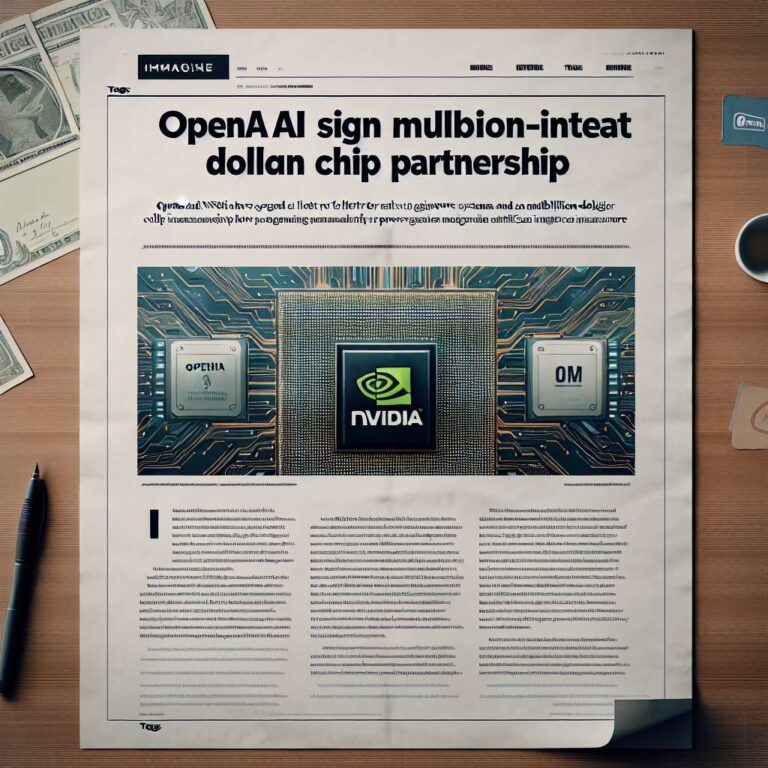OpenAI and Nvidia have signed a letter of intent for a large-scale partnership to supply at least 10 gigawatts of Nvidia systems for OpenAI’s next-generation Artificial Intelligence infrastructure, aimed at training and running future models targeting superintelligence. Nvidia intends to invest up to an undisclosed multibillion-dollar amount in OpenAI as the systems are deployed. The first phase is scheduled to go live in the second half of 2026 on Nvidia’s upcoming Vera Rubin platform, with initial deliveries expected in late 2026 and one gigawatt of computing power coming online in that window. The companies said final details will be settled in the coming weeks, and noted the planned 10 gigawatts of chips would draw as much power as more than 8 million US households. OpenAI CEO Sam Altman framed the effort as a bet that compute infrastructure will underpin the economy of the future and accelerate Artificial Intelligence breakthroughs at scale.
The deal is structured in two steps, according to a person familiar with the talks: Nvidia will buy non-voting shares in OpenAI, and OpenAI will use those proceeds to purchase Nvidia hardware. Analysts welcomed the ambition but flagged “circular” concerns that some of Nvidia’s investment could flow back to it via chip purchases. Bernstein’s Stacy Rasgon said the pact helps OpenAI pursue very aspirational compute goals while ensuring Nvidia’s systems get built, but it will fuel questions about circularity. The agreement underscores growing interdependence between leading chip suppliers and Artificial Intelligence model developers, and it could unsettle rivals that view it as reinforcing Nvidia’s grip on accelerators and OpenAI’s momentum in software.
Market reaction was swift. Nvidia shares climbed as much as 4.4 percent to a record high after the announcement, while Oracle, which is collaborating with OpenAI, SoftBank, and Microsoft on the Stargate global Artificial Intelligence data center initiative, rose about 6 percent. Broadcom slipped 0.8 percent following reminders that OpenAI has explored custom chips with Broadcom and Taiwan Semiconductor Manufacturing Co. A person close to OpenAI said the Nvidia partnership does not change OpenAI’s existing compute plans, including its collaboration with Microsoft. Nvidia, for its part, has recently announced a chip collaboration with Intel and pledged a separate multibillion-dollar funding commitment.
The pact lands amid heightened regulatory scrutiny. The Justice Department and Federal Trade Commission previously agreed to allow closer scrutiny of Microsoft, OpenAI, and Nvidia’s roles in the Artificial Intelligence sector, though the current administration has taken a lighter approach than the prior one on competition issues. OpenAI and Microsoft also signed a non-binding agreement to restructure OpenAI into a for-profit company, signaling further governance changes. Antitrust lawyer Andre Barlow warned the Nvidia-OpenAI tie-up could entrench Nvidia’s chip position alongside OpenAI’s software lead, making it harder for chip competitors like AMD and model rivals to scale. With OpenAI reporting more than 700 million weekly active users, the scale and timing of this deal are likely to keep regulators, investors, and competitors watching closely as final terms are negotiated.

